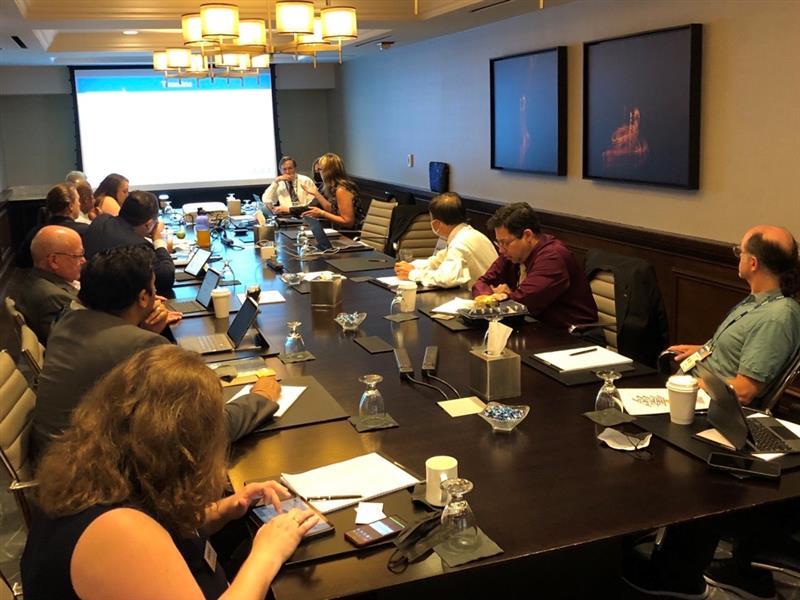Newly convened task force targets gaps in preparations for air taxis
By Paul Brinkmann|June 29, 2022
Group established by American Institute of Aeronautics and Astronautics plans to suggest solutions
AIAA AVIATION FORUM, Chicago — The United States and much of the world is not yet ready to permit thousands of electric air taxis and cargo drones to take to the skies under the advanced air mobility revolution, and one reason is a lack of information about how many conventional aircraft fly today and when and where they fly, said members of the newly established, U.S.-based AAM Task Force.
“In order to make the safety case for new AAM vehicles and services, we need lots of data from existing regional airlines or helicopter service,” Husni Idris, a NASA aerospace research engineer and member of the task force, told me following the group’s inaugural meeting June 28 at the AIAA Aviation forum in Chicago. The group was chartered by the American Institute of Aeronautics and Astronautics, Aerospace America’s publisher.
Needed data includes information about how local and regional aircraft integrate into airport environments, how frequently they fly, what obstacles they may encounter and what types of destinations they already serve, Husni told me, elaborating on what others on the task force said during the meeting.
“AIAA could be a forum to bring together those airlines and other stakeholders and to establish a process for data collection,” Husni said. “The FAA doesn’t collect enough data about existing service, and data on emerging technology is difficult to use for planning.”
For example, data from regional airlines could help NASA and local or state governments plan for regional air taxi services, including the one that Germany-based Lilium is planning in Florida and other markets.
“Some of that information may be proprietary, but the airlines may have an interest in providing it to prepare for future aircraft technology,” Husni said.
Forming the task force amounted to AIAA’s formal recognition “that the policy dimensions of AAM are tremendous, not just because of type certification or operation certification for a new class of aircraft,” Steve Lee, a senior director with AIAA, said during the meeting. Lee added that “ there is such incredible intense interest in this topic at the state and local level.”
Nancy Mendonca, NASA’s deputy for its AAM research efforts, suggested the task force identify some “early win” goals and present more details at upcoming AIAA events. She suggested AIAA could help local and state governments prepare for air taxis, partly by connecting them with university experts.
“Everybody in this room has a passion, or several things they are pushing on AAM,” said aerospace consultant Virginia Stouffer, who chairs the task force, saying the list so far includes “ground infrastructure, clean electric transport or air taxis for everyone.” She invited colleagues to “let us know what you want to work on, and we’ll put it in a file.”
Related Topics
Advanced air mobilityGet the latest news about advanced air mobility delivered to your inbox every two weeks.






